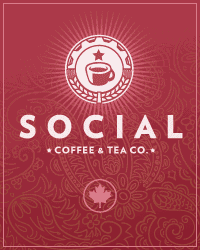Some people call the Isthmus of Panama the crossroads of the world. Certainly the archaeological record indicates that several cultures have come and gone over the last ten thousand years. When Columbus arrived in America about 500 years ago the Ngobe Bugle people, our present day coffee pickers, were already here.
The Ngobe are seasonal coffee pickers. They live on a large reservation called the Comarca that stretches from the continental divide to the Atlantic Ocean. When the coffee season begins they migrate over the Western or Pacific side of the volcano to help with the harvest. Many survive all year long on the money they make coffee picking. They stay here in rustic housing provided by coffee farms. Most of these are in worse shape than a garden shed with an outhouse. Some stay all year round and have jobs in other local industries.
I want to tell you some stories about these remarkable people and why we should care about them. Most coffee farms do not make much money. With the current economics of coffee farming the pickers do not make a living wage and the farms cannot afford to pay them one. Even fair trade does not ensure that money gets passed down to the pickers.
There is no substitute for learning more about the farms where your coffee comes from.
Many roasters buy only based upon taste. Few, if any, of the cuppers that come to our Valley to buy coffee are interested in seeing workers housing or asking questions about welfare. I hope more transparency regarding the true origin of coffee is in the future of the coffee industry and I want to encourage coffee enthusiasts — like you reading this article — to get involved.
Pickers get squeezed when margins are thin. Small farms sell unprocessed cherries and make very little profit. Large farms mostly sell green beans and this is also a low margin business where economies of scale are important. In both cases, the coffee picking costs are one of the biggest annual costs for the coffee farmer. Even this year when the price for cherries was very high $10 per lata (approximately 30lbs of cherries), the pickers were being paid $3 or 30% of the average lata price.

Other costs include fertilizing, chopping down the grass and undergrowth beneath the coffee, treating disease, pruning, growing new plants and planting, transporting the cherries and workers and endless repair and replacement weed whackers, chain saws and sprayers. These costs account for approximately 60% of the typical lata price, leaving 10% as “profit” for the farmer on average, or $1 per lata delivered. It is not possible to live off the income from a small farm of less than five hectares unless you are also using the land for subsistence agriculture. However, if coffee farmers are poor the Ngobe are destitute.
The Ngobe maybe a poor people today but they have a rich past. When the first Spaniards arrived in Central America it was during the age of pirates and treasure hunting and the ancestors of the Ngobe people had gold and lots of it. There still is gold in these mountains. You can still pan the rivers for gold and there is supposed to be lots of it still buried underground. Some say the Ngobe managed to save some of their gold and there is a giant stash in a secret place hidden deep in the mountains on the continental divide far into the cloud forest. If it does exist, it is a well kept secret. The Ngobe today are poor, very poor.
The Ngobe culture has been eroded steadily over the last 500 years. Their language is mainly a spoken one. They do not have many stories that have survived the centuries. They are being lost. Some remember their great grandparents telling stories but they are not passing them on. They do not know their history very well either. They are not taught Ngobe history in the schools on the reservations that were created for them. In fact there are no books in the Ngobe language except the Bible which was translated by Spanish missionaries.
That said, there is one story that they do tell. It is a story to remember how most of their ancestors were destroyed by the Spanish invaders and that they are descended from some of the few survivors. It is the legend of Urraca. He was a brave Ngobe chief who led them into battle against the Spaniards.
Today, the men often wear red bandanas or red baseball caps. They put red hats on their babies. This is meant to symbolize blood and is done in memory of their fallen ancestors. More recently this has become a political statement and is used by organizations like trade unions.
The Ngobe are physically extremely tough. They are a short, immensely strong people. Typically the ladies wear brightly colored cotton dresses that were designed by the Spanish missionaries and have room for endless pregnancies. There are special collars that get attached for formal occasions as well as ceremonial colors. The men wear trousers any color except black and wellington boots.
The typical family size is very large, around 10 children. Families often travel to work on the same farm. Infant mortality is high as health care and information about good nutrition is not readily available in the Comarca. Like lots of agrarian economies a large family means more coffee picking arms and legs and more money. Health problems have been exacerbated by cheap processed packaged high sugar food entering the diet. They also do not metabolize alcohol very well. The traditional diet is mainly vegetarian with no dairy produce. There is not much protein in their diet. They do eat meat and will hunt wildlife including monkeys, armadillo, agouti and pretty much anything on four legs that moves.


The Ngobe are an exciting people. In a world where most things are the same, they have a refreshing difference about them. It is not just that they speak Ngobe and most do not even speak any Spanish here in Panama. There is a whole body language and different way of communicating. They use their mouths where we use hands and where we use mouths they use hands. Let me explain.
A Ngobe signals with their mouth. They make a big pouting expression as if to blow you a kiss then make a head gesture. The first time you see the pout, a Westerner would assume they are being indecently propositioned, but it is not so. A big pout followed by a right movement of the head means: «Over there to the right» A big pout followed by a shake of the head means:«No more.» And these gestures are many and not intuitive.
There is no shouting that I have ever heard. There is a very loud sound, however, a yodeling call. Something between a fog horn and a bird call that is used to alert the group. On my coffee farm, it usually means: «The chief (me) is coming.» If there is a disagreement or serious conflict, it is not argued, it is fought with bare hands. They use knives and it can be violent. Recently, the Ngobe have been protesting mining on their lands. They have repeatedly blocked the InterAmerican highway that is the only road through Panama from Costa Rica to Panama City. They do this before they negotiate.
They are dependent on subsistence agriculture and nature day to day. They know the natural cures for things in plants. The plant that clots blood, the one that relieves a cold, the ones that help with digestion and so on. They are passionate about the environment and protecting it from mining and hydro-electric projects.


We have much to learn from the Ngobe People. We coffee farmers are very lucky to work with such a people. May we all learn to use natural remedies, protect the environment, and be strong survivors like the Ngobe. It is my hope that learning a little about our coffee pickers will improve your appreciation of our coffee and make you curious to travel to see us farmers in Central America.
I know many coffee enthusiasts want to do the right thing with their purchasing dollars and are concerned about fair wages and good working conditions. Getting to know what goes on at origin can be very enriching, mind broadening and just plain fun. If a trip to a farm is not an option for you then become a careful label reader. You should find the name of the country, the growing region and the farm on your bag of roasted coffee. Some coffee roasters even include the name of the farmer on the bag! You can also follow some coffee farmers, like myself, on Twitter.
I hope that the next trend in coffee will be about even greater transparency about where your coffee comes from. Less reliance on coffee certifications which is a bit of a check box exercise only large coffee producers can afford to do. Instead more emphasis on getting to know the farms, our practices, and even our pickers, all on a more personal level would help both us farmers and those who work on our farms.






















